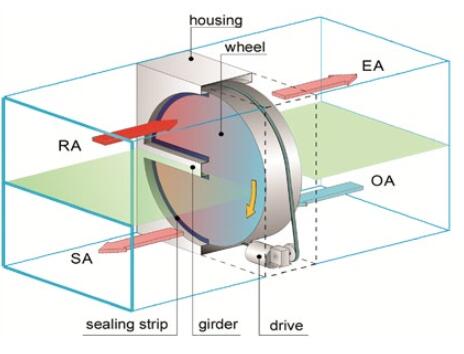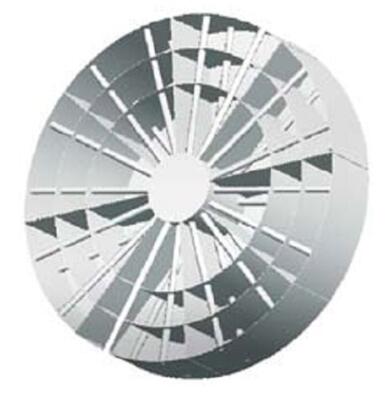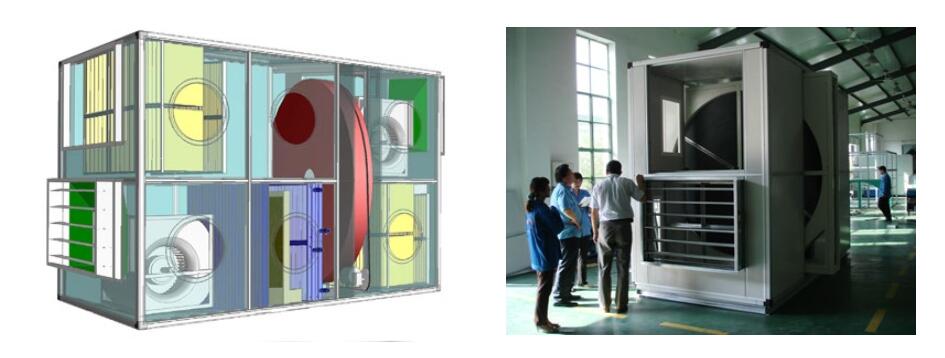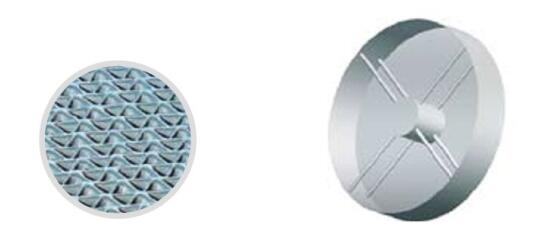Heat Wheels
Rotary heat exchanger (wheel) is mainly used in building ventilation or in the air supply/discharge system of air conditioning equipment. The wheel transfers the energy (cold or heat) contained in exhaust air to the fresh air supplied to indoor. It's one important equipment and key technology in the field of construction energy-saving.
Rotary heat exchanger is composed of heat wheel, case, drive system and sealing parts. The heat wheel rotates powered by the drive system. When outdoor air passes through half of the wheel, return air passes through reversely the rest half of the wheel. In this process, about 70% to 90% heat contained in the return air can be recovered to supply air to indoor.
Working Principle
Rotary heat exchanger is composed of alveolate
heat wheel, case, drive system and sealing parts.
The exhaust and outdoor air pass through half of the
wheel separately, when the wheel rotates, the heat
and moisture are exchanged between the exhaust and
outdoor air. The energy recovery efficiency is up to
70% to 90%

|
Sensible Wheel Materials
The sensible heat wheel is made by aluminum foils of 0.05mm thickness. |
|
|
Wheel Construction The wheel of the rotary heat exchanger is made of alternating layers of flat and corrugated aluminum foil to form the alveolate shape. Various height of corrugation is available. Flat surface ensures minimum leakage. Interior spokes are used to mechanically bond the rotor’s laminations. These are threaded at the hub and welded at the periphery.
|

|
|
Applications Rotary heat exchanger can built in air handling unit (AHU) as a main part of the heat recovery section. Usually side panel of the exchanger casing is unnecessary, except that bypass has been set in AHU. |
|

|
|
|
It can also be installed in the ducts of ventilation system as a main part of the heat recovery section, connected by flange. In this case, side panel of the exchanger is necessary to prevent leakage. 
|
|
|
Note: casing type and segment quantity should depend on the application spaces as well as transportation capability and conditions at installation. Over segmentation will increase the assembly work, and overlarge size will cause diffculties in transportation. Application conditions: - Ambient temperature: -40-70°C - Max face velocity: 5.5m/s - Max pressure on casing: 2000Pa |
|






